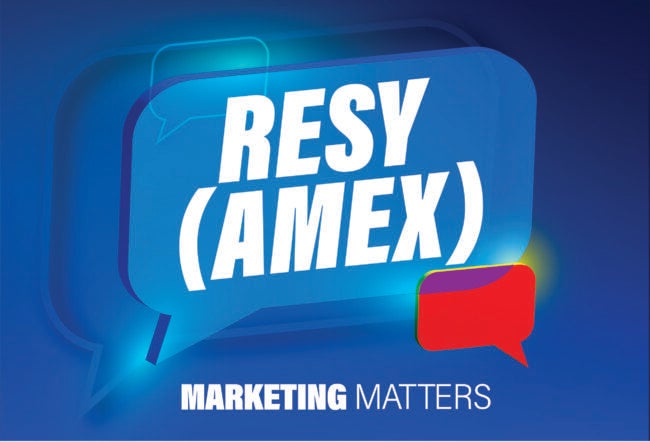Along with athletes, brand marketers also competed for attention at the recent winter Olympic Games in Sochi — and by many accounts, Procter & Gamble’s “Thank you, Mom” campaign came out on top. Eric Solomon, head of the strategy and insights for ZOO, the creative team at Google that works with firms to build their brands, explains how other companies can learn from the experience of P&G and other firms to build emotional connections with their customers.
For most of February, the world’s eyes were planted firmly on Sochi, Russia. From the controversies surrounding LGBT rights to the condition of accommodations to the Olympic Games themselves, the numbers were impressive: 22.1 million average daily viewers and 38.1 million tweets. More than 1,000 hours of live streams, with countless more hours of online content viewed on demand. As always, for the athletes the Sochi Games were about the potential of winning on the world’s biggest stage. But athletes weren’t the only ones competing: Brand marketers also see these “tent-pole” events as an opportunity to make a global impact.
Brands like Procter & Gamble are quick to seize this opportunity. Building on the company’s popular “Thank you, Mom” campaign introduced during the 2010 Winter Games in Vancouver, Canada, P&G struck again in Sochi. Once more, the firm’s video strategy was built around showing snippets of future Olympic athletes throughout their development and the moms who are there to support them. One of the most popular videos from Sochi shows moms picking up their kids after they fall down. P&G seeded the video on YouTube a month before the opening ceremonies at Sochi, and it’s now approaching the 20 million view mark. Some viewers react with tears, while others find the content overwrought, but either way, the message from P&G rings clear: Behind every achievement — big or small — lies the emotional bond between moms and their loved ones.
The Blurry Line
Marketers have long understood the need to establish meaningful emotional connections between their brand and their customers. The quality of these connections helps to define the world’s most iconic brands. But the context in which to establish these relationships has changed dramatically over the past several years. For most of us, there is no longer a true distinction between online and offline — everything is digital now. For brands and their users, this means increasingly fragmented messages, multiple screens, divided attention and a general sense of entitlement to access what we want, when we want it and how we want it. Building brand love requires more ingenuity than it has in the past.
One reason brands must think more strategically about how they establish and grow relationships is that the line between brands and people has blurred. You don’t have to look much further than Lady Gaga, Miley Cyrus, or Will Ferrell’s fictional 1970s anchorman turned real-life Dodge pitchman Ron Burgundy to see that brands are people and people are brands. This certainly isn’t a new phenomenon (think: Jack LaLanne, Oprah Winfrey), but the line between brands and people has gotten incredibly thin and it’s only getting blurrier.
http://youtu.be/57e4t-fhXDs
Everything a brand does these days is at a global scale — you’re always on, everywhere. For users, brands are at the peak of accessibility, living across multiple devices when and where we want (and don’t want) them. And, critically, we’re now in the realm of universal authorship. We feel the right to add to stories, even brand stories, in dynamic, two-way dialogues. Brands can no longer simply “interrupt” us. They need to provide relevant, contextual, compelling content that actually means something to people. This is why content like P&G’s “Thank you, Mom” videos strike a chord. Anyone who has experienced the trials and tribulations of supporting their child’s achievements immediately identifies with what P&G is saying.
The Brand Relationship Arc
To help simplify the shift in thinking that brands must employ to build emotional connections with their users, we talk about this relationship from a human-centric perspective. We employ the Brand Relationship Arc as a construct to bring this to life and to foster conversations with Google’s clients.
The underlying principle of the Brand Arc is that there are specific milestones or feelings that arise for users along the branding journey, similar to other relationships. When a brand first breaks into consciousness, they only exist for users — people know the name. After time, some brands take on deeper meaning for people, becoming known for something, or known for something unique or meaningful for them; something that people care about. Where things start to get really interesting is further up the Arc when users begin to incorporate brands as part of their lives, something that shapes or defines them. Very few brands are able to take the relationship beyond that, to a place where people would forgive that brand no matter what, or even defend that brand at all costs.

One important note is that this is clearly an oversimplification, both of human relationships and the type of relationships brands might cultivate with their users. But that’s the point — to simplify a complicated issue. Having a conversation with a brand marketer about what their brand stands for or means to people is tricky business, in part because those who are closest to the brand have an inherently harder time remaining objective. We use the Brand Arc as a tool to help guide this important conversation. The Arc opens the door to having candid conversations about how people perceive our clients’ brands — chats that are too often skirted around or ignored.
“Brands can no longer simply “interrupt” us. They need to provide relevant, contextual, compelling content that actually means something to people.”
Conversations around the Brand Arc are especially rich when we start to explore the dynamic nature of the tool. For example, our clients are quick to point out that while they may only “exist” for some of their users, others would “defend” them in heartbeat. Or, maybe they’re “known for something” in one market, but don’t “exist” at all in another. The Brand Arc helps us get to the root of many of our clients’ core branding challenge: Can I build meaningful relationships with people who know and use my brand?
The reality, of course, is that only a handful of brands are able to build relationships that rise to the “forgive,” or “defend” territory. Getting that high up on the Arc is something that takes time, focus and commitment to standing for something. For a sense of the kinds of brands that are “forgiven” or “defended,” consider those which brand super-fans are willing to tattoo on their bodies. By and large these are lifestyle brands that have established an emotional role in some peoples’ lives. Not everyone would “defend” these brands, but those who would might do so passionately.
Of course, for the majority of brands, the point is not to be forgiven or defended at all costs. Rather, it’s to move up the Arc from where they are now; to go from just “existing” to being “known for something;” to go from being “known” to being “known for something I care about.” Each point on the Arc is an exponential leap, so a seemingly small move actually represents a fundamental difference in the way a user relates to that brand.
Moving up the Arc
“Thank you, Mom” was P&G’s first foray into marketing at the corporate umbrella level. Historically, P&G advertised as a company of individual brands lacking a collective identity. Prior to “Thank you, Mom” P&G would not have have existed, or only barely existed for most people. With “Thank you, Mom,” however, P&G is trying to move up the Brand Arc to “being known for something” or for “being known for something I care about,” especially for moms. P&G has chosen to stand for something, which allows them to move up the Arc. But is P&G the only brand who can use emotional content to move up the Arc like this? Absolutely not. As a general trend, we have seen that brands who strive beyond “existing” on the Arc are the ones who find unique ways to break through the significant clutter.
For example, Dove built a viral sensation based on the core insight that most women underestimate how attractive they are, affecting their self image. Other buzzed-about brands like Red Bull and GoPro speak directly to to users who are engaged by the exhilarating content that makes up the bulk of their brand communications. Both of these brands take a clear position on where they stand which allows them to be “known for something I care about” or even “represent me” for the millions who opt in. Volvo Trucks is another brand that likely didn’t even “exist” for most people prior to 2013. With content like Jean-Claude Van Damme’s “Epic Split Feat,” though, the brand is adopting a point of view that resonates with people — to the tune of 70 million views on YouTube. If Volvo Trucks didn’t “exist” before, it certainly does now.
“Ultimately, brands need to ask: What content I can provide to entertain, educate or provide a utility for my users?”
We believe that all brands, no matter how well known, have the opportunity to build emotional connections that allow them to move up the Arc. To do that, marketers need to be starkly honest with themselves about what their brand stands for now, what role their brand can play for users and how committed they are to delivering moments that truly connect with people. Ultimately, brands need to ask: What content I can provide to entertain, educate or provide a utility for my users?
This isn’t about asking a new question, but rather posing it with an understanding of our modern context. There is no such thing as digital when everything is digital. The line between brands and people is blurry. Brands are always on and ubiquitous, spurring the need for relevant, contextual, compelling content to break through the noise and be heard. The Brand Arc certainly does not solve for what a brand needs to do to develop the right content or marketing strategy. However, we believe the Arc can be used to identify how great the opportunity is for a brand to build meaningful relationships with its customers. Perhaps more importantly, the Arc introduces a simple construct in which to frame these difficult, important conversations.
About the author: Eric Solomon is the Head of Strategy & Insights for the ZOO, the creative team within Google that helps brands creatively and effectively exploit the potential of the Google | YouTube platform, technologies and creative resources. Eric entered the world of branding through the door of academia, earning his Ph.D. in psychology. He has spent the last decade plus studying the intersection between motivation, persuasion, brands and human behavior. Somewhere in between he wrote a food column for a small newspaper in Boston. These days he enjoys eating even more than writing about eating.



